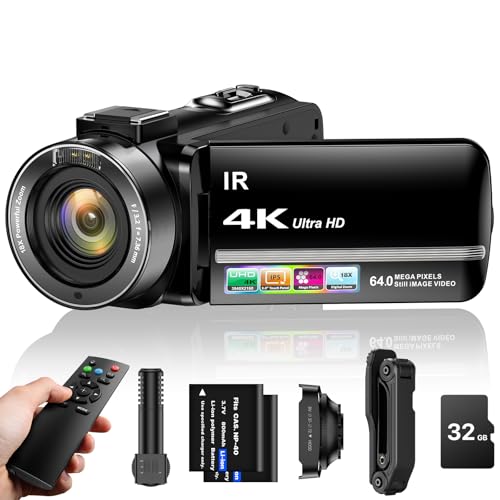




Choosing the right location to mount your security camera DVR is crucial for ensuring optimal surveillance coverage and protection of your property.
Before installing your DVR, consider factors such as the layout of your property, potential blind spots, and accessibility for maintenance and monitoring.
Mounting the DVR in a centralized, secure location with minimal exposure to dust, moisture, and extreme temperatures is recommended to prolong its lifespan and ensure reliable performance.
Best Locations for Mounting
When it comes to mounting your security camera DVR, choosing the right location is crucial for optimal surveillance coverage. Here are some of the best locations to consider:
| 1. Near the main entrance: | Mounting the DVR near the main entrance of your property can help capture clear footage of anyone entering or exiting. |
| 2. High and angled: | Mounting the DVR high up and at an angle can provide a wider field of view, reducing blind spots and capturing more details. |
| 3. In a centralized location: | Placing the DVR in a centralized location can help ensure equal coverage of all areas of your property. |
| 4. In a weatherproof enclosure: | If mounting the DVR outdoors, make sure to place it in a weatherproof enclosure to protect it from the elements. |
| 5. Near power outlets: | Ensure that the DVR is located near power outlets for easy installation and maintenance. |
Indoor and Outdoor Options
When choosing where to mount your security camera DVR, consider both indoor and outdoor options. For indoor installations, you can place the DVR near your monitor or in a secure location such as a closet or cabinet. This will help protect the DVR from tampering or theft.
For outdoor installations, you can mount the DVR in a weatherproof enclosure or a secure location such as a garage or shed. Make sure the location is well-ventilated and protected from extreme temperatures to ensure the longevity of the DVR.
Whether you choose an indoor or outdoor installation, make sure the DVR is easily accessible for maintenance and troubleshooting while remaining secure from unauthorized access.
Considerations for Placement
When deciding where to mount your security camera DVR, there are several key considerations to keep in mind:
1. Accessibility
Make sure the DVR is easily accessible for maintenance and troubleshooting. Avoid placing it in hard-to-reach locations that may hinder regular check-ups.
2. Temperature and Ventilation
Ensure the DVR is placed in an area with proper ventilation to prevent overheating. Avoid placing it near heat sources or in direct sunlight, as this can affect its performance.
Height and Angle Factors
When mounting your security camera DVR, consider the height and angle at which you place it. The ideal height for mounting a DVR is typically between 8 to 12 feet above ground level. This height provides a good vantage point for capturing clear images and reducing the risk of tampering or vandalism.
Additionally, the angle at which the DVR is mounted is crucial for optimal surveillance coverage. Aim to position the DVR at a downward angle of about 30 to 45 degrees to ensure maximum coverage of the area without any blind spots. This angle allows the camera to capture faces and other important details more effectively.
Connecting to Power and Network
When mounting your security camera DVR, it is essential to ensure that it is properly connected to power and network for optimal functioning. Here are the steps to connect your DVR:
- Locate a power outlet near the mounting location of your DVR.
- Connect the power adapter to the DVR and plug it into the power outlet.
- Ensure that the DVR is receiving power by checking the power indicator light.
- Next, locate an Ethernet port on your DVR for network connection.
- Connect one end of an Ethernet cable to the DVR and the other end to your router or network switch.
- Verify the network connection by checking the network indicator light on the DVR.
By following these steps, you can ensure that your security camera DVR is properly connected to power and network, allowing you to monitor your property effectively.
Weatherproofing and Protection
When mounting your security camera DVR outdoors, it is essential to weatherproof and protect it from the elements. Exposure to rain, snow, and extreme temperatures can damage the DVR and affect its performance. Here are some tips to weatherproof and protect your security camera DVR:
1. Enclosure:
Invest in a weatherproof enclosure or housing for your DVR to shield it from moisture and dust. Make sure the enclosure is made of high-quality materials that can withstand outdoor conditions.
2. Proper Installation:
Mount the DVR in a secure and sheltered location, such as under an eave or awning, to provide additional protection from direct exposure to rain and sunlight. Ensure that the mounting surface is sturdy and level to prevent any water damage.
Monitoring and Maintenance
Once you have installed your security camera DVR in the optimal location, it is important to regularly monitor and maintain the system to ensure its effectiveness. Here are some key steps to consider:
Regular Check-ups
Perform routine check-ups on your security camera DVR system to ensure that all cameras are functioning properly and that the footage is being recorded correctly. This can help identify any issues early on and prevent potential security breaches.
Software Updates
Keep the software of your security camera DVR system up to date to ensure that it is equipped with the latest security features and bug fixes. Regularly check for updates from the manufacturer and install them promptly to maintain the system’s integrity.
By staying vigilant and proactive in monitoring and maintaining your security camera DVR system, you can ensure that your property remains secure and protected.






